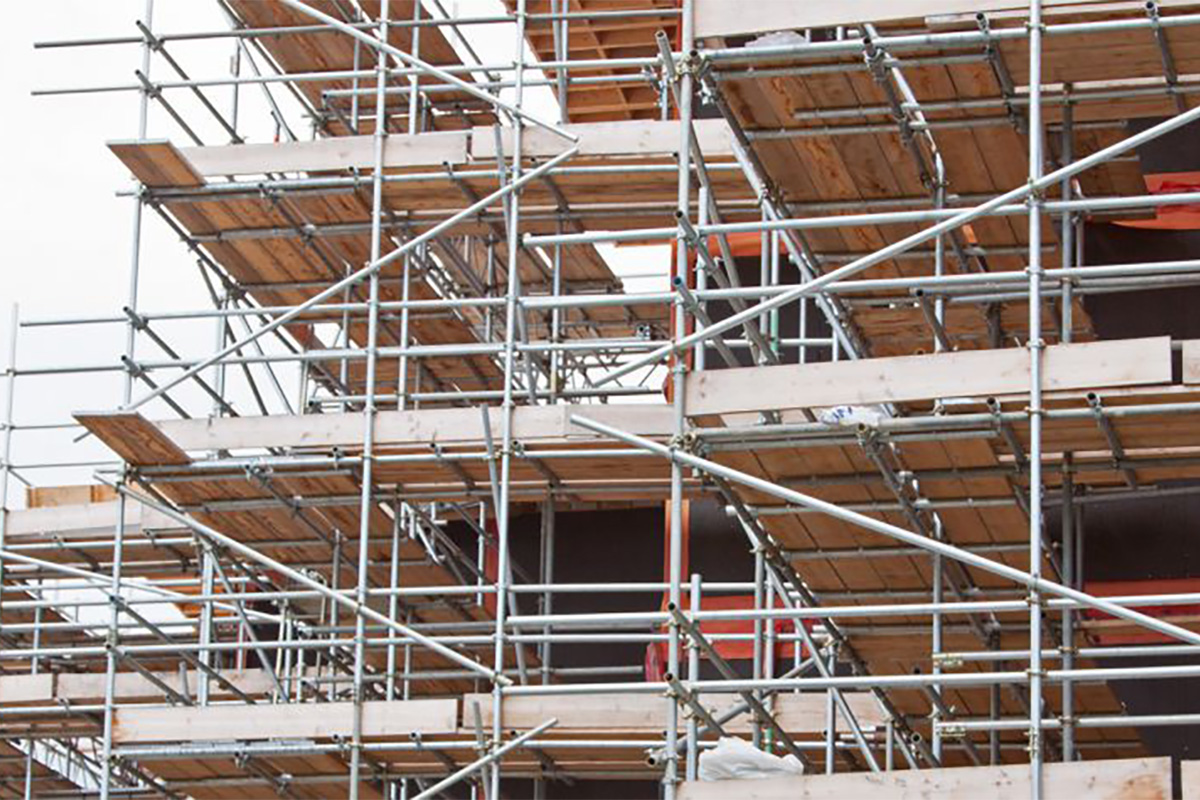Top-Notch Scaffolding Near Me: Expert Solutions for Every Job
Top-Notch Scaffolding Near Me: Expert Solutions for Every Job
Blog Article
The Conveniences of Scaffolding for Safety and Effectiveness in Building Projects
Scaffolding is a vital component in the world of building and construction, dramatically contributing to both safety and functional performance. The effect of scaffolding extends past fundamental security measures; its critical application can transform task timelines and results (Scaffolding).
Improved Employee Security

Improved worker security is a paramount worry in the construction sector, where the risks related to falls and mishaps can have alarming consequences. Efficient scaffolding systems play a crucial function in minimizing these hazards by supplying secure platforms for workers at elevated elevations. By ensuring that scaffolding is correctly set up and kept, construction companies can substantially lower the likelihood of falls, which are among the leading reasons of office injuries and casualties.
Moreover, scaffolding enhances security with its style attributes. Guardrails, toe boards, and non-slip surface areas add to a secure working environment, reducing the danger of mishaps. Furthermore, scaffolding enables employees to gain access to hard-to-reach locations without the requirement for makeshift options, which can endanger safety and security criteria.
Educating employees on the appropriate use scaffolding is similarly crucial. Making sure that workers are experienced regarding tons capabilities, assembly procedures, and safety protocols further boosts the performance of scaffolding in protecting against mishaps. Finally, integrating robust scaffolding systems within construction tasks not just enhances worker safety yet likewise promotes a society of safety and security that profits the entire labor force while boosting general productivity.
Improved Accessibility and Flexibility

In addition, scaffolding enables the convenient transportation of materials and tools, lessening downtime related to relocating tools. Workers can efficiently access various areas of a task, which is especially important in complex builds where vertical and horizontal movement is frequent - Scaffolding. This ease of access not only improves operations yet additionally makes it possible for groups to react swiftly to transforming job demands
Furthermore, scaffolding can be tailored to accommodate specific site conditions, boosting flexibility in irregular or tight spaces. This flexibility makes certain that building tasks can proceed smoothly, no matter the obstacles provided by the atmosphere. By fostering better gain access to and movement, scaffolding plays a vital function in supporting building and construction staffs and enhancing the overall performance of structure projects.
Raised Job Efficiency
In construction, task effectiveness is considerably affected by the efficient use scaffolding systems. By giving a secure and stable system for workers, scaffolding decreases downtime and speeds up the pace of building and construction activities. With better access to raised workplace, teams can finish tasks quicker, reducing the total project timeline.
The modular nature of modern-day scaffolding permits fast assembly and disassembly, allowing swift shifts in between different stages of a project. This versatility not just enhances operations original site but likewise adds best way to service scaffold fittings to much better control among different professions, as multiple teams can function simultaneously on different areas of a structure.
Additionally, scaffolding makes certain that workers are positioned appropriately to execute their tasks without unnecessary pressure or threat of injury, thus lowering the likelihood of mishaps that can cause pricey delays. Enhanced precaution installed in scaffolding systems, such as guardrails and toe boards, further support effective procedures by keeping employee concentrate on the task at hand instead of security worries.

Adaptability for Various Tasks
Scaffolding systems stick out for their adaptability throughout a variety of construction jobs, with the ability of meeting certain website requirements and tasks. Their modular layout enables quick adjustments to fit various building kinds, from household to commercial frameworks, making certain that workers have risk-free accessibility at different heights and angles.
These systems can be customized for varied applications, such as façade job, indoor remodellings, or durable commercial tasks. For example, lightweight light weight aluminum scaffolds are excellent for interior work, while durable steel structures give the necessary support for massive building. The convenience of scaffolding encompasses its ability to be configured for both short-term and long-term frameworks, permitting specialists to efficiently prepare and perform their jobs.
Additionally, scaffolding can be utilized in difficult atmospheres, including city settings where room is restricted or on unequal terrain where conventional gain access to services are impractical. This flexibility minimizes the demand for several accessibility remedies, lowering expenses and job timelines. By accommodating a variety of conditions and tasks, scaffolding boosts the general effectiveness and effectiveness of construction initiatives, showing to be an important asset in the structure market.
Compliance With Safety Requirements
Exactly how can construction tasks make sure the safety of employees while preserving efficiency? Conformity with safety criteria is vital in achieving this equilibrium. Regulatory structures, such as OSHA in the United States, give guidelines that control making use of scaffolding, ensuring that it satisfies stringent safety and security criteria. By sticking to these standards, building and construction companies can lessen the risk of mishaps, which not only secures employees but additionally enhances general task effectiveness.
Appropriate scaffolding style and installment play a crucial function in conformity. Scaffolds must be constructed from top notch products and designed to endure the certain lots they will certainly encounter. Routine assessments and upkeep are important to ensure that these structures stay risk-free throughout the job period. Educating employees on secure scaffold usage and the relevance of conformity with safety standards further reinforces a culture of safety on-site.
Furthermore, paperwork and record-keeping associated to safety evaluations and worker training are vital. These techniques Read Full Article not just demonstrate compliance but additionally give responsibility and transparency. Ultimately, by focusing on adherence to safety and security requirements, building projects can cultivate a more secure workplace, therefore raising efficiency and efficiency without endangering employee security.
Conclusion
In conclusion, scaffolding serves as a crucial part in structure jobs, significantly enhancing safety and security and performance. Adherence to safety and security requirements emphasizes the significance of scaffolding in achieving successful job end results, making it essential in the building sector.
Scaffolding is a vital part in the world of building, considerably contributing to both security and operational performance. The effect of scaffolding extends past basic security measures; its tactical execution can transform project timelines and outcomes. In conclusion, incorporating robust scaffolding systems within construction projects not only improves worker safety but also advertises a society of safety and security that profits the whole labor force while improving general productivity.
In conclusion, scaffolding serves as a vital component in structure tasks, dramatically improving security and effectiveness. Adherence to safety standards emphasizes the relevance of scaffolding in accomplishing successful project end results, making it crucial in the building and construction market.
Report this page